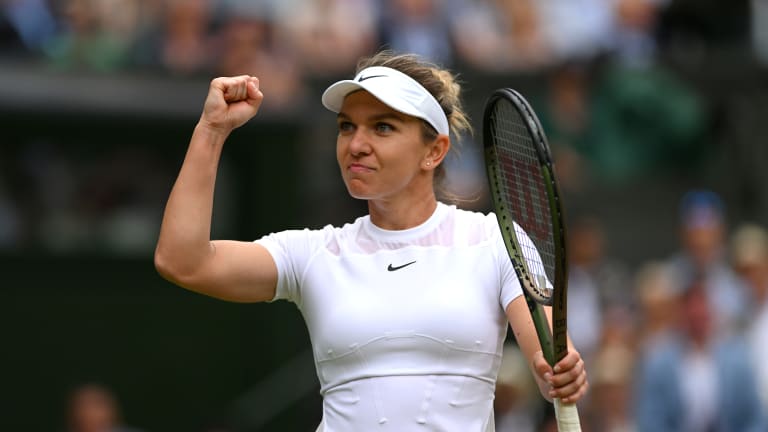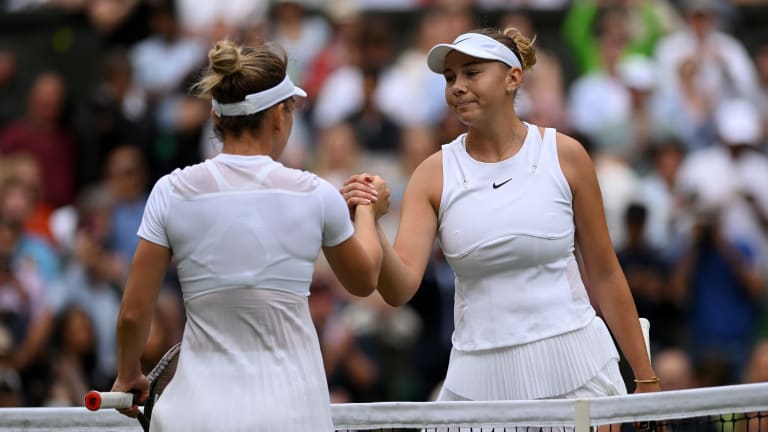Wimbledon
Simona Halep notches 12th straight Wimbledon win after tallying six unforced errors in dismissing Amanda Anisimova
By Jul 06, 2022Wimbledon
Darren Cahill: Jannik Sinner watches more Carlos Alcaraz matches than he does with any other player
By Jul 14, 2025Wimbledon
Jannik Sinner reignites Carlos Alcaraz rivalry with Wimbledon victory
By Jul 14, 2025Wimbledon
Jannik Sinner reversed his usual pattern against Carlos Alcaraz. It won him Wimbledon
By Jul 14, 2025Wimbledon
Veronika Kudermetova and Elise Mertens win women's doubles title at Wimbledon
By Jul 13, 2025Wimbledon
Joy to the World: What Carlos Alcaraz has, and what we are enjoying
By Jul 13, 2025Wimbledon
Iga Swiatek keeps surprising herself after Wimbledon title caps "surreal" turnaround on grass
By Jul 12, 2025Wimbledon
Iga Swiatek wins first Wimbledon, sixth Grand Slam title with 6-0, 6-0 rout of Amanda Anisimova
By Jul 12, 2025Wimbledon
Wimbledon men's final preview: Will Carlos Alcaraz, Jannik Sinner share another epic?
By Jul 12, 2025Wimbledon
Julian Cash, Lloyd Glasspool become first all-British pair to win Wimbledon men's doubles title since 1936
By Jul 12, 2025Simona Halep notches 12th straight Wimbledon win after tallying six unforced errors in dismissing Amanda Anisimova
The Romanian fought off a late push from the American to reach her third semifinal at SW19 with a 6-2, 6-4 victory Wednesday.
Published Jul 06, 2022
Advertising
Advertising

Halep is yet to drop a set in her return to the final four.
© Getty Images
Advertising

“I don't really like playing not to the fullest of my abilities,” said Anisimova, “especially in such a packed stadium. It's very disappointing for me."
© Getty Images